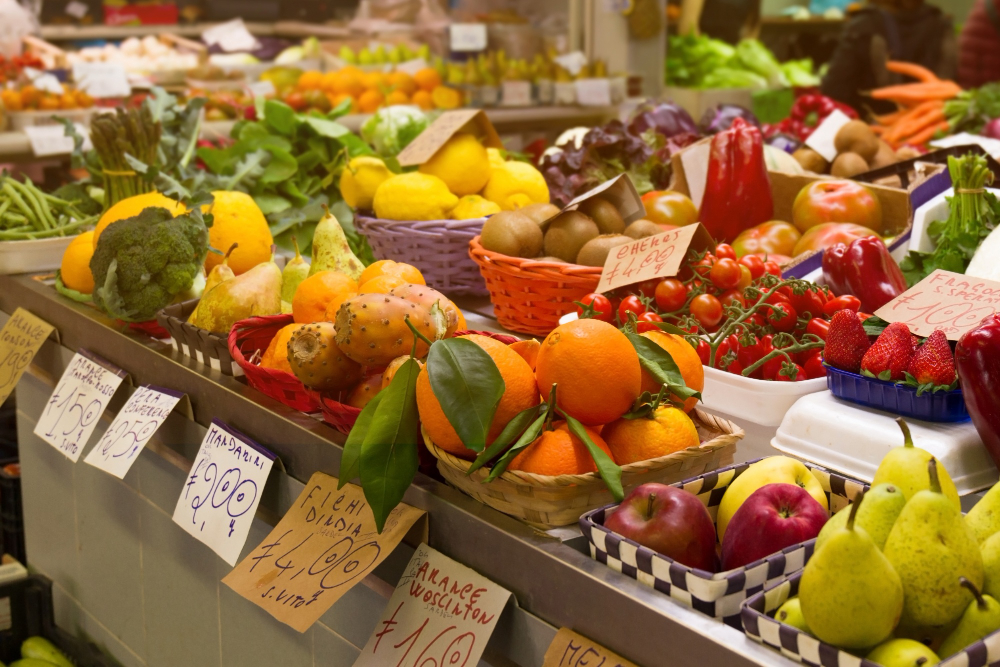March 12, 2024
FAO Food Price Index eases again in February, mostly driven by lower world cereal prices
» The FAO Food Price Index* (FFPI) stood at 117.3 points in February 2024, down 0.9 points (0.7 percent) from its revised January level, as decreases in the price indices for cereals and vegetable oils slightly more than offset increases in those for sugar, meat and dairy products. The index was down 13.8 points (10.5 percent) from its corresponding value one year ago.
» The FAO Cereal Price Index averaged 113.8 points in February, down 6.1 points (5.0 percent) from January and as much as 32.9 points (22.4 percent) below its February 2023 value. International prices of all major cereals declined month on month. Maize export prices dropped the most as expectations of large harvests in Argentina and Brazil, along with competitive prices offered by Ukraine eager to take advantage of the smooth running of the maritime trade route, weighed on the market. As regards wheat, the decline in international prices was mostly the result of lower export quotations due a strong export pace from the Russian Federation, which exerted downward pressure on prices from other origins, in particular the European Union. In line with the softer tone in wheat and maize markets, world prices of barley and sorghum also eased. International rice prices edged down by 1.6 percent in February, as, aside from Indonesian purchases, fresh import demand remained broadly slow and new-crop harvests began in some suppliers.
» The FAO Vegetable Oil Price Index averaged 120.9 points in February, down 1.6 points (1.3 percent) from January and standing 15.0 points (11.0 percent) below its year-ago level. The decline mainly reflected lower world prices of soy, sunflower and rapeseed oils, more than offsetting marginally higher palm oil quotations. International soyoil prices dropped markedly in February, mainly underpinned by prospects of abundant soybean outputs from South America amid generally favourable harvesting conditions. Meanwhile, global sunflower and rapeseed oil prices decreased, reflecting lingering ample global export availabilities. By contrast, world palm oil prices rose slightly in February, amid seasonally lower production across major producing countries in Southeast Asia.
» The FAO Dairy Price Index averaged 120.0 points in February, up 1.3 points (1.1 percent) from January, but stood 18.6 points (13.4 percent) below its value in the corresponding month last year. In February, world butter prices rose the most, underpinned by higher import demand from Asian buyers and seasonally declining milk production in Oceania. Meanwhile, whole milk powder prices continued to rise, albeit slowly, principally due to increased import demand, especially from China, which was partially offset by a drop in the European Union prices. Skim milk powder prices remained stable, as an increase in Oceania prices was nearly offset by lower European Union prices, largely reflecting lower import demand from the region due to higher shipping costs and transport delays stemming from the conflict in the Red Sea. International cheese prices also increased marginally, as buying interest from Asia turned positive amidst lower inventories in the European Union.
» The FAO Meat Price Index* averaged 112.4 points in February, up by 2.0 points (1.8 percent) from January, reversing the seven months of consecutive drops, and standing 0.9 points (0.8 percent) below its corresponding value a year ago. International price quotations for poultry meat rose the most, followed by bovine meat, underpinned mainly by a rise in demand from leading importing countries. The rise in bovine meat prices was due to lower-than-anticipated supply from Australia, as heavy rains disrupted cattle transportation from major producer regions. Meanwhile, pig meat prices increased slightly due to higher demand from China, together with higher internal demand in Western Europe amidst a lingering tight supply situation. By contrast, international ovine meat prices declined due to a slowdown in the pace of imports by China and a record-breaking production following flock rebuilding in Australia.
» The FAO Sugar Price Index averaged 140.8 points in February, up 4.4 points (3.2 percent) from January, marking the second consecutive monthly increase, and standing 15.6 points (12.5 percent) above its value a year ago. Persistent concerns over the outlook for the upcoming season in Brazil following a prolonged period of below-average rainfall continued to support world sugar prices, exacerbating the seasonal upward pressure. Furthermore, forecasts pointing to likely production declines in Thailand and India, two leading exporting countries, contributed to the price increase. Nevertheless, improved precipitation in late February in the key growing areas of Brazil and the weakening of the Brazilian real against the United States dollar contained the rise in world sugar prices.
Source: Food and Agriculture Organization (FAO)
Legal Notice: The information in this article is intended for information purposes only. It is not intended for professional information purposes specific to a person or an institution. Every institution has different requirements because of its own circumstances even though they bear a resemblance to each other. Consequently, it is your interest to consult on an expert before taking a decision based on information stated in this article and putting into practice. Neither Karen Audit nor related person or institutions are not responsible for any damages or losses that might occur in consequence of the use of the information in this article by private or formal, real or legal person and institutions.






